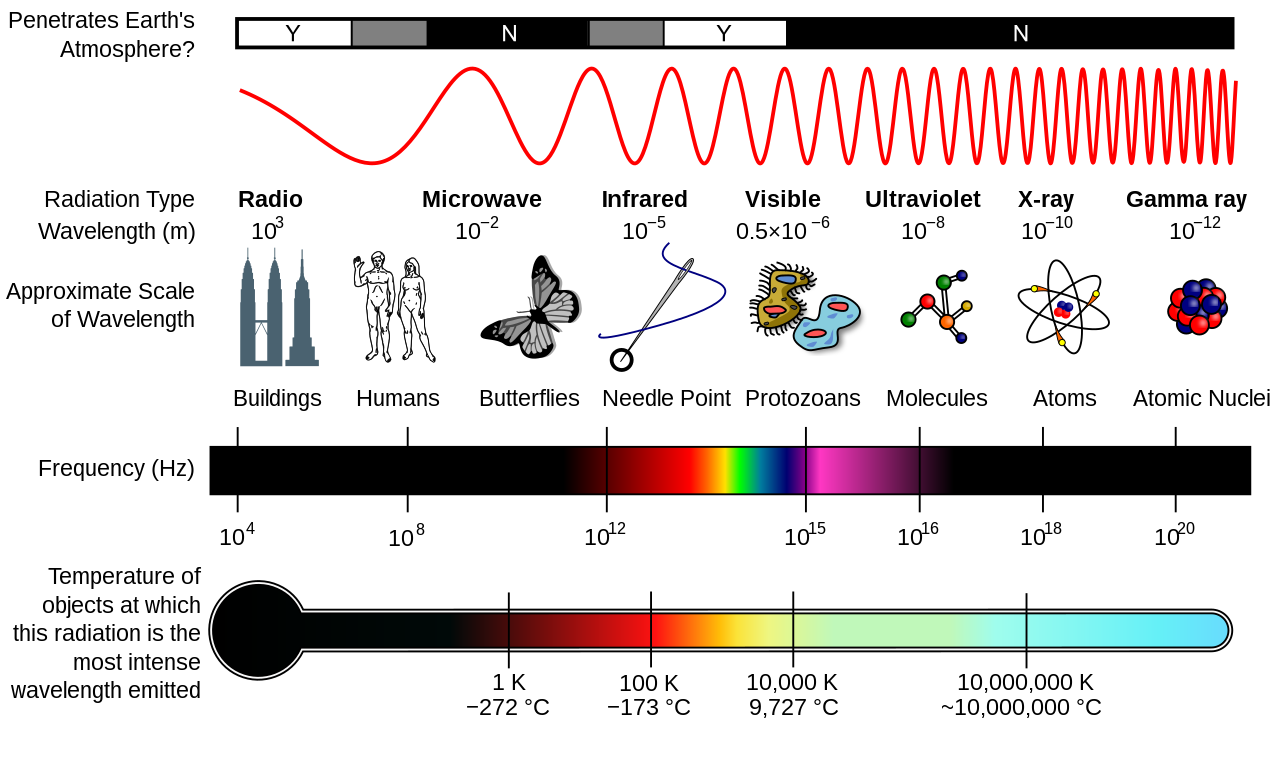What kind of light is that?
Electromagnetic Spectrum
The electromagnetic spectrum is the entire set of wavelengths and frequencies of electromagnetic radiation. From longest to shortest wavelength and lowest to the highest frequency, the groups are as follows: radio waves, microwaves, infrared waves, visible light, ultraviolet waves, x-rays and gamma rays.
Electromagnetic Spectrum
The electromagnetic spectrum is the range of frequencies or wavelengths of radiation that consists of Waves that propagate through space without a need for a medium to travel through. This means that they are able to travel through a vacuum which is good since most of the universe is actually a vacuum.
The wavelengths range from extremely long radio waves to shorter microwaves, then infrared waves before moving into the visible spectrum which our eyes can detect. The visible spectrum is a narrow band of light between approximately 380 and 700 nanometres, which follows the well-known pattern explained by the mnemonic ROYGBIV.
The first wavelengths are the longest and the last is the shortest going from red, orange, yellow, green, blue, indigo and violet. Following the visible, the next shortest part of the spectrum is ultraviolet light, followed by x-rays and finally gamma rays. These last portions of the electromagnetic spectrum have large amounts of energy due to their high frequency which makes them potentially dangerous.

What is the Longest Wavelength of the Electromagnetic Spectrum?
Radio waves are by far the longest wavelength since they are by definition the longest. There is no theoretical limit to how long these waves are and they could be infinitely long in theory. There is probably a limit to how long wavelengths can get however as the universe stretches out em waves over time, known as redshifting, but the universe is has had a finite existence, so far. Red light is the longest wavelength of the visible part of the spectrum, as evidenced by the rainbows that have red on their outermost edge after white light has been split.
If you want to learn more about light, why not contact us to find out more about our GCSE tutoring services?
What are the Uses of the Electromagnetic Spectrum?
The EM spectrum is very useful to us and its variety can be utilised for lots of different purposes. Infrared radiation is useful for cooking and heating and can be seen in toasters that use this form to cook bread. The radiation which comes from heaters also is in the form of infrared.
Microwaves and radio waves are regularly used for long-distance communications via satellites and mobile phones. As we are all familiar with, x-rays can be used to look inside our bodies at our bones and assess us for injuries. Gamma rays can also be used in cancer treatments and the treatment is known as radiotherapy.

What are the Dangers Associated with the Electromagnetic Spectrum?
Although all waves transfer energy, different frequencies of electromagnetic radiation pose varying dangers. Microwaves, for example, could lead to the internal heating of cells in our bodies if we were to be exposed. Heating our cells could cause DNA damage and damage to the internal structures of cells as well as affect the efficiency of enzymes. Higher frequency waves are potentially more dangerous since they transfer more energy. We can see this effect during summer when we are exposed to strong sunlight we can get burned from the ultraviolet light. Sun creams block UV light and provide protection. Sunburn is usually a relatively mild injury, but over long periods, exposure to ultraviolet light can cause DNA damage which can lead to skin cancer.
